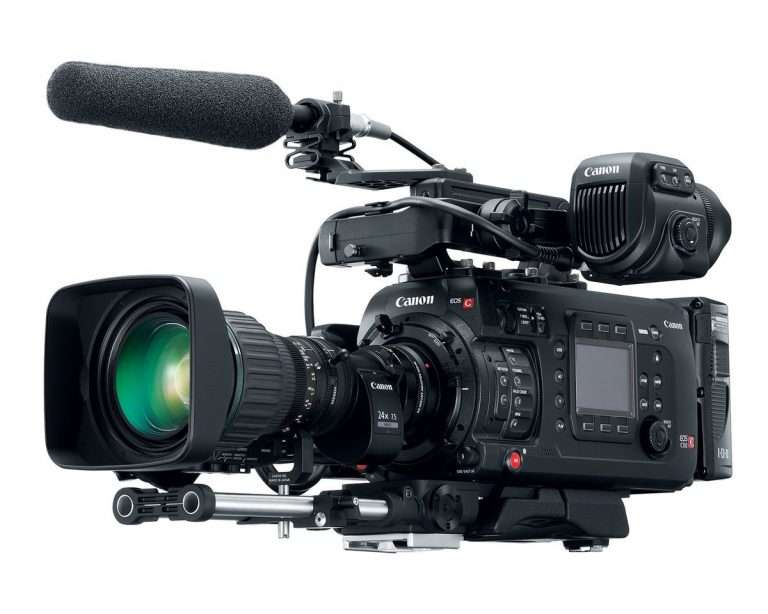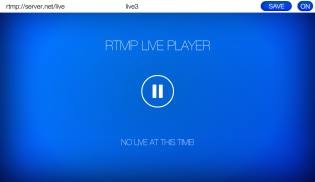Essential Equipment for High-Quality Simulcasting
Simulcasting, the process of broadcasting a live stream simultaneously across multiple platforms, requires a strategic selection of equipment to ensure the highest quality of both audio and video. From choosing the right cameras to match various production levels to ensuring the audio is crystal-clear and the stream reaches viewers worldwide with minimal lag, each component plays a vital role. This article delves into the essential equipment needed for high-quality simulcasting, covering the nuances of video cameras, audio gear, mixing tools, encoders, and content delivery networks.
Key Takeaways
- Selecting the appropriate video camera—from entry-level to professional—lays the foundation for the visual quality of your simulcast.
- Audio equipment, including microphones, interfaces, and mixers, is crucial for delivering a clear and immersive auditory experience.
- Mixing equipment is essential for larger events, allowing for seamless integration of multiple video and audio sources.
- Encoders, whether hardware or software, are the heartbeat of simulcasting, encoding content for seamless delivery over the internet.
- Content delivery networks (CDNs) are key to global reach, ensuring the stream is distributed to viewers with minimal lag, regardless of location.
Choosing the Right Video Cameras for Diverse Simulcasting Needs

Entry-Level Video Cameras for Beginners
Stepping into the world of simulcasting can be as exciting as it is daunting, especially when it comes to selecting the right video camera. If you’re just starting out, entry-level video cameras offer a balance between functionality and ease of use, making them ideal for beginners. These cameras are typically more affordable, with prices ranging from $300 to $700, and they’re designed to produce quality content under good lighting conditions and with proper technique.
When choosing your first camera, consider features like 4K resolution and AI-powered tracking, which can significantly enhance your live shows and streaming experiences. For instance, the OBSBOT Tail Air is a popular choice among newcomers for its advanced capabilities.
Here’s a quick rundown of what you might expect with entry-level options:
- Smartphone cameras: Your gateway to live streaming, leveraging the device you already own.
- Action cameras: Durable and portable, perfect for on-the-go streaming.
- Entry-level camcorders: A step up in quality, offering more dedicated video features.
Remember, the key to a successful start in simulcasting is not just the equipment but also your passion and dedication to learning the craft. As you grow more comfortable and your needs evolve, you can gradually upgrade to more sophisticated gear.
Prosumer Video Cameras for Enthusiasts
As you step up from the basics, prosumer video cameras offer a sweet spot between consumer ease and professional depth. These cameras are perfect for enthusiasts like you who demand higher quality without the complexity of professional rigs. With prices ranging from $800 to $3,000, prosumer cameras strike a balance in cost and performance.
Most prosumer cameras boast HDMI connections and more manual controls, allowing for a tailored streaming experience. However, they stop short of the fully customizable options found in professional-grade equipment. Here’s a quick look at what you might expect from a prosumer camera:
- DSLR cameras
- Mirrorless cameras
- 4K cameras
- Prosumer camcorders
Our top pick, the Sony Alpha a7 III, stands out with its remarkable image quality and versatility, priced at $1,998.
Remember, the right camera is the one that fits your specific needs and skills. Don’t get swayed by the latest model or brand hype. It’s about finding the tool that elevates your simulcasting to the next level.
Professional Video Cameras for Top-Tier Production
When you’re ready to elevate your simulcasting to the pinnacle of quality, professional video cameras are your go-to gear. These cameras offer large, high-resolution sensors and advanced manual controls, allowing you to fine-tune every aspect of your production. With options for interchangeable lenses and professional connection standards like XLR and SDI, you’re equipped to handle any broadcasting challenge.
Prices for professional video cameras vary significantly, ranging from around $1,500 to upwards of $25,000. Here’s a quick glance at some top picks and their price points:
| Camera Model | Sensor Type | Price |
|---|---|---|
| Panasonic AG-CX350 4K | Large Sensor | $3,695 |
| Sony Alpha a7 III | Full-Frame | $1,998 |
Investing in professional video cameras is a commitment to your craft. Over time, the investment pays off, not just in the quality of your streams, but in the satisfaction of your audience and the longevity of your production endeavors.
Remember, the right camera is an investment in your brand’s future. While the initial cost may be higher, the long-term benefits of professional-grade equipment can be invaluable. Whether you’re capturing a live concert, a sports event, or a conference, the quality of your video feed is paramount. Choose wisely, and your audience will notice the difference.
Audio Equipment: Ensuring Crystal-Clear Sound

Microphones: The Voice of Your Stream
When you’re diving into the world of simulcasting, the microphone you choose becomes the voice of your stream. Selecting the right microphone is crucial; it’s not just about clarity, but also about the right pickup pattern that suits your broadcast’s purpose. For instance, if you’re covering live events, you might want a microphone that captures the vibrant ambient sounds. Conversely, for a focused podcast or tutorial, a mic that isolates the speaker’s voice from any background noise is essential.
Here’s a quick rundown of microphone types to consider:
- Dynamic microphones: Rugged and great for loud, live settings.
- Condenser microphones: Ideal for studio-quality sound in controlled environments.
- Shotgun microphones: Excellent for picking up sound in a specific direction, reducing side noise.
- Lapel microphones: Perfect for clipping onto speakers, providing consistent audio as they move.
Remember, the best audio quality can keep viewers engaged even when video quality may falter. Studies suggest that audiences are more forgiving of visual imperfections than poor sound. So, investing in a high-quality microphone can significantly enhance your live streaming experience.
For the ultimate audio fidelity, consider an XLR microphone. They’ve been the gold standard for professionals due to their superior sound quality and durability. Also, don’t overlook features like background noise cancellation, which can be a lifesaver in noisy environments, ensuring your stream remains crisp and clear.
Audio Interfaces: Bridging the Sound
When you’re diving into the world of simulcasting, the audio interface becomes your best friend. It’s the critical link that takes your sound from the microphones and instruments to the digital realm where your audience can appreciate it. Choosing the right audio interface is pivotal to ensuring that your stream’s audio quality matches your video’s visual splendor.
Here’s what to consider when selecting an audio interface:
- Physical size: Will it fit in your setup?
- Input and outputs: Does it have enough for all your audio sources?
- Automation and Connectivity: Can it integrate smoothly with your existing equipment?
- On-board processing: Does it offer any built-in effects or processing?
- User interface: Is it easy to navigate and adjust settings?
Remember, an audio interface with multiple inputs and outputs allows for greater flexibility and control over your sound. It’s not just about volume; it’s about clarity, depth, and presence in your simulcast.
Whether you’re using a simple USB microphone or a fleet of XLR mics, your audio interface is the gateway to a polished, professional sound. And if you’re looking to streamline your setup, consider software solutions that combine video and audio mixing capabilities, reducing the need for additional hardware.
Sound Mixers: Orchestrating the Audio Experience
When you’re orchestrating the audio experience for your simulcast, the sound mixer is your conductor’s baton. It’s the tool that blends individual audio tracks into a harmonious whole. Your choice of sound mixer can make or break the auditory aspect of your simulcast.
Consider the essentials when selecting a sound mixer:
- The number of input and output channels
- Auxiliary and monitor buses and outputs
- On/off or mute buttons
- Digital inputs
- Control via a network app
For a complex shoot, you’ll typically end up with multiple audio sources. A sound mixer allows you to adjust levels and other qualities, ensuring a clean sound signal integrates seamlessly with your visuals.
Remember, the right mixer should not only accommodate all your audio sources but also offer the flexibility to control and automate your audio environment. Tools like Elgato’s Streamdeck, with its customizable LCD keys, can streamline your workflow, allowing you to focus on delivering a high-quality simulcast to your audience.
Mixing Equipment: Crafting the Perfect Visual and Audio Blend

Video Mixers: Switching with Style
When you’re diving into the world of simulcasting, having the right video mixer is like having a magic wand at your fingertips. It’s all about seamless transitions and crisp visuals that keep your audience captivated. Video mixers, or switchers, are the backbone of your production, allowing you to switch between camera angles, graphics, and other video sources with ease and style.
Consider the size, inputs/outputs, and user interface when choosing a mixer. For instance, the Blackmagic Design ATEM Television Studio Pro 4K is a powerhouse for those needing professional-grade equipment. On the other hand, the Roland V1-HD offers portability and built-in audio mixing, perfect for live events on the move.
Remember, the goal is to create a dynamic and engaging simulcast that resonates with your viewers. The right video mixer can make that happen.
For those who prefer a software solution, some live-streaming apps integrate video mixing capabilities, eliminating the need for separate hardware. This can be a game-changer for streamers who value flexibility and simplicity. After all, the best live streaming apps can enhance your production without the clutter of additional equipment.
Audio Mixers: Harmonizing Your Sound
Imagine you’re in the middle of a live event, and you need to seamlessly transition between different audio sources. An audio mixer is your best ally, allowing you to harmonize the sound of your simulcast with precision. With an audio mixer, you can adjust levels, mute unnecessary noise, and ensure that every word and note is heard crystal clear.
Here are some key features to consider when selecting an audio mixer:
- The number of input and output channels
- Auxiliary and monitor buses and outputs
- On/off or mute buttons
- Digital inputs
- Control via a network app
Remember, the right audio mixer can elevate your production quality by giving you control over the sound landscape of your simulcast.
For those of you looking to create a more professional setup, consider the expandability of your audio mixer. A mixer with multiple input and output options will allow you to handle a variety of audio sources, which is especially useful for complex shoots or multi-camera events. Think about the physical size, automation, connectivity, and the user interface to ensure it fits your specific needs.
Software vs. Hardware: Choosing Your Mixing Tools
When you’re knee-deep in the world of simulcasting, the choice between software and hardware mixing tools can make or break your production quality. Software solutions offer a level of convenience and flexibility that’s hard to beat. With a few clicks, you can switch between video and audio sources, making live edits a breeze. But don’t forget, the physical size and user interface of your equipment are crucial for a smooth operation.
Remember, the right mixing equipment should align with the complexity of your shoot and the number of audio and video sources you plan to manage.
Hardware mixers, on the other hand, are the stalwarts of reliability. They’re built to handle the rigors of live production with dedicated on-board processing and automation features. Here’s what to consider when choosing your mixing arsenal:
- Input and outputs
- Automation and Connectivity
- On-board processing
- User interface
Ultimately, your decision may hinge on the specific needs of your event, be it a music production, a business conference, or a sporting event. Weigh the pros and cons, and choose the tools that will help you orchestrate the perfect audiovisual experience for your audience.
Encoders: The Heartbeat of Your Simulcast

Hardware Encoders: Reliable and Robust
When you’re deep into the world of simulcasting, you’ll quickly realize the importance of a reliable encoder. Hardware encoders are the workhorses of live streaming, designed to deliver consistent performance and resilience. Unlike their software counterparts, these dedicated devices are built with one purpose in mind: encoding your video content into a streamable format with efficiency and stability.
Hardware encoders excel in environments where streaming is non-stop or where the highest quality is a non-negotiable. They come in various forms, from compact, portable units perfect for on-the-go streaming to more substantial setups for permanent studio installations. Most commonly, they’ll offer HDMI and SDI inputs, catering to a range of professional video sources.
With a hardware encoder, you’re not just buying a piece of equipment; you’re investing in peace of mind. The robustness of these devices means you can count on them for 24/7 operation, without the fear of crashes that can plague software solutions.
If you’re considering a hardware encoder, here’s a quick rundown of some top picks mentioned in a recent roundup:
- Teradek
- TriCaster
- Niagara Video
- Blackmagic Design ATEM Mini Pro
- URayCoder
Each of these has its own set of features and price points, so you’ll want to match your choice to your specific simulcasting needs and budget.
Software Encoders: Flexible and Accessible
When you’re diving into the world of simulcasting, software encoders offer a level of flexibility that’s hard to match. These programs, such as vMix, Wirecast, OBS Studio, and VidBlasterX, run on your personal computing devices and are perfect for those who prefer a hands-on approach to stream customization.
With software encoders, you’re in control of every aspect of your stream, from the resolution to the bit rate.
However, keep in mind that while software encoders are more accessible and often less expensive than their hardware counterparts, they do require a bit more technical know-how. They also depend on the power of your computer, so ensuring your system meets the encoder’s requirements is crucial for a smooth streaming experience.
Here’s a quick rundown of what you might consider when choosing a software encoder:
- Customization: Tailor your stream to your exact specifications.
- Cost-effectiveness: Generally more affordable than hardware options.
- Ease of use: Intuitive interfaces for those familiar with digital tools.
- System requirements: Make sure your computer can handle the encoder’s demands.
Remember, the right choice between a software and a hardware encoder depends on your specific needs and the level of reliability you’re aiming for. If you’re looking for a solution that’s both robust and flexible, software encoders are definitely worth exploring.
RTMP-enabled Encoders: Streaming Without Boundaries
When you’re diving into the world of live streaming, RTMP-enabled encoders are your secret weapon for seamless, high-quality broadcasts. These encoders, which use the Real-Time Messaging Protocol, are the bridge between your content and your audience, no matter where they are.
With an RTMP-enabled encoder, you’re not just sending video into the void—you’re ensuring it arrives with the fidelity and speed your viewers expect.
Choosing the right RTMP encoder can be daunting, but here’s a simple breakdown to guide you:
- Software Encoders: Ideal for those starting out or on a budget. They offer customization and are often integrated with mixing tools. Examples include OBS Studio and Wirecast.
- Hardware Encoders: Built for speed and reliability. They’re a go-to for professionals who need consistent performance.
Remember, the choice between software and hardware encoders will hinge on your specific needs—budget, quality, and the level of control you desire over your stream. While software encoders are more accessible, hardware encoders provide that extra layer of professional quality that might just set your stream apart.
Content Delivery Networks (CDNs): Your Simulcast’s Global Reach

Understanding CDNs: The Basics
When you’re diving into the world of simulcasting, knowing the ins and outs of a Content Delivery Network (CDN) is crucial. CDNs are the backbone of ensuring your content reaches viewers with the best possible quality and minimal delay. They work by caching your stream on a network of servers around the globe, so your audience can access it from the nearest location, reducing latency and buffering.
CDNs are not just about speed; they also add a layer of security to your stream, protecting against potential breaches and attacks.
Here’s why CDNs are essential for your simulcast:
- Security: Safeguard your content with robust security measures.
- Speed: Deliver your streams swiftly, bypassing congested networks.
- Quality: Provide a high-quality viewing experience with minimal lag.
- Flexible Pricing: Choose a pricing model that fits your bandwidth and regional needs.
Remember, a CDN can make or break the viewer’s experience. By selecting the right CDN, you’re ensuring that your simulcast is accessible, reliable, and of the highest quality, no matter where your audience is tuning in from.
Choosing the Right CDN for Your Audience
When it comes to simulcasting, the quality of your stream is paramount. Choosing the right CDN is crucial for delivering a seamless viewing experience to your audience, no matter where they are. A Content Delivery Network, or CDN, ensures that your content is cached and served from the nearest server location to your viewers, reducing latency and buffering.
Here are some key considerations when selecting a CDN for your simulcast:
- Speed: A CDN can significantly reduce latency, ensuring your content is delivered swiftly.
- Quality: Your audience expects high-quality video without interruptions. A CDN helps maintain this standard.
- Flexible Pricing: Costs can vary based on bandwidth, features, and target regions. Look for a CDN that offers pricing that fits your budget and streaming needs.
Remember, the goal is to provide an uninterrupted, high-quality streaming experience that keeps your viewers engaged.
Security is also a non-negotiable aspect of your CDN choice. With the rise of cyber threats, selecting a CDN that offers robust security features is essential to protect your content and your viewers’ privacy. By leveraging a CDN, you’re not just improving the viewer experience; you’re also fortifying your stream against potential attacks.
Maximizing Stream Quality with Advanced CDN Features
When you’re aiming to provide an unparalleled viewing experience, leveraging advanced CDN features is crucial. Adaptive Media Delivery is one such feature that ensures your audience enjoys consistent, high-quality video playback, regardless of the device they’re using. By utilizing a network of servers, CDNs like Akamai offer this seamless adaptability, which is essential for maintaining engagement during your simulcast.
Remember, the goal is to minimize latency and buffering to keep your viewers hooked.
Here’s how a CDN can elevate your simulcast:
- Speed: A CDN accelerates content delivery, reducing latency and ensuring your stream reaches viewers swiftly.
- Quality: It guarantees high-quality video with minimal interruptions, which is exactly what your audience desires.
- Scalability: As your audience grows, a multi-CDN strategy can help you scale effortlessly, accommodating spikes in viewership.
- Security: With sensitive content often part of a simulcast, CDNs provide an additional security layer to thwart potential attacks.
By integrating these advanced features into your simulcast setup, you’re not just streaming content; you’re crafting an experience that resonates with your audience and stands out in the digital landscape.
Conclusion
As we’ve explored the essential equipment for high-quality simulcasting, it’s clear that the right tools can make a significant difference in the production value and reach of your live streams. Whether you’re broadcasting a large event with multiple camera angles or a simple single-camera setup, understanding the role of video cameras, audio equipment, mixing gear, encoders, and CDNs is crucial. Remember, while the investment in professional-grade equipment might seem daunting, the payoff in stream quality and viewer engagement is well worth it. With the insights and recommendations provided, you’re now equipped to create live streaming experiences that captivate and connect with audiences worldwide. And if you’re looking for a comprehensive platform to support your streaming needs, consider exploring options like Dacast that cater to both novice and professional broadcasters alike.
Frequently Asked Questions
What type of video camera should I start with for basic simulcasting?
For basic simulcasting needs, an entry-level video camera is a good start. It offers simplicity and affordability, making it ideal for beginners who are just getting into live streaming.
When should I consider using a prosumer video camera?
A prosumer video camera is suitable for enthusiasts who want better quality and more features than entry-level models but aren’t ready for the investment of professional equipment. It’s perfect for those who want to elevate their production value.
Why is audio quality important in simulcasting, and how can I improve it?
Audio quality is crucial because clear sound ensures your message is heard without distractions. To improve audio quality, invest in good microphones, audio interfaces for sound clarity, and mixers for balancing audio levels.
Do I need mixing equipment for a small live streaming setup?
Mixing equipment is not always necessary for small, simple live broadcasts. However, for larger events with multiple camera angles and customized audio, mixing equipment is essential to create a professional-quality stream.
What is the difference between hardware and software encoders?
Hardware encoders are dedicated devices that are generally more reliable and robust for continuous streaming, while software encoders are programs that run on a computer, offering more flexibility and accessibility.
How does a CDN contribute to the quality of my simulcast?
A Content Delivery Network (CDN) ensures that your live stream reaches viewers around the world with minimal lag, maintaining high-quality video and audio by reducing buffering and speeding up content delivery.







